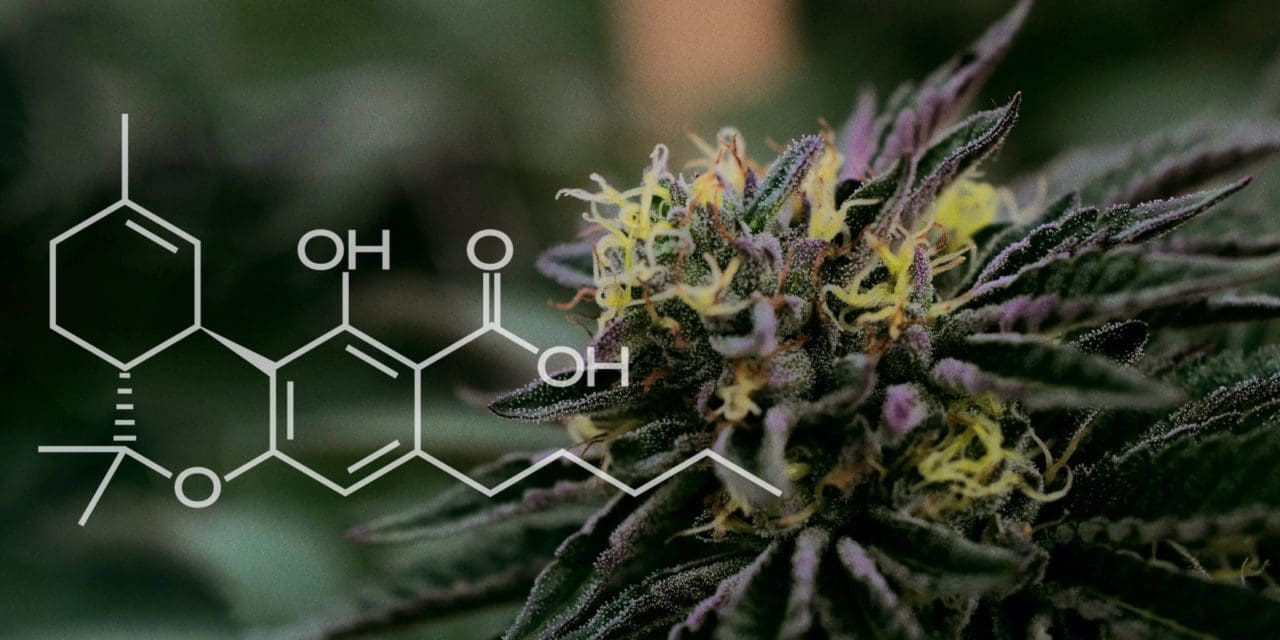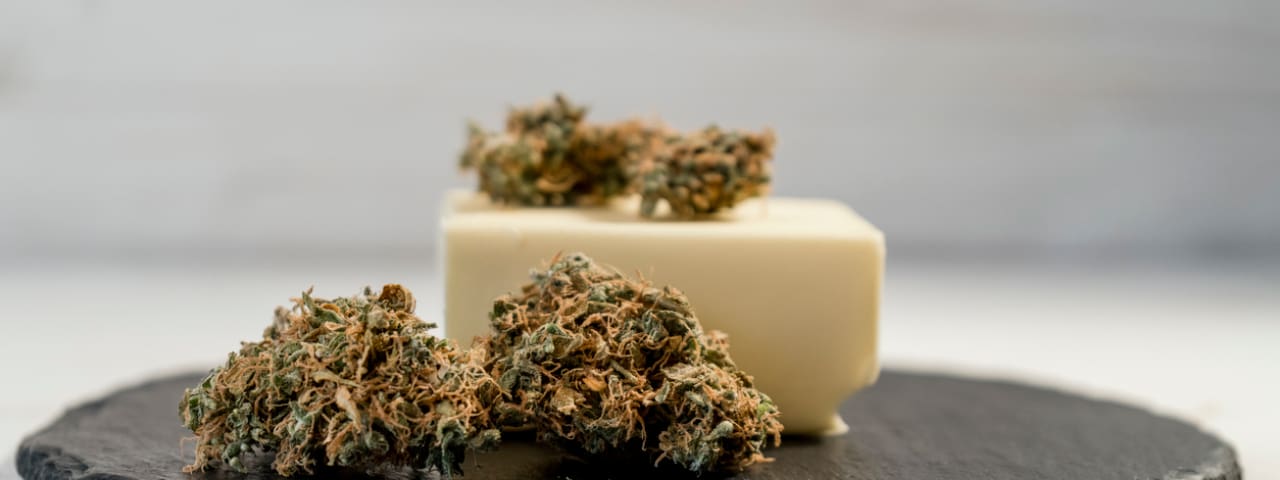Complete guide to cannabis decarboxylation
3 min read



Decarboxylation is a chemical process in which heat changes the properties of certain compounds. In cannabis culture, the term “decarb” is commonly used to describe this process.
Raw cannabis must be decarboxylated in order to activate compounds such as tetrahydrocannabinol (THC) and cannabidiol (CBD), which produce the plant’s effects.
Want to save 30% on cannabis products?
Start your Leafwell Membership
Enjoy deep discounts at your local dispensary, in store and online. Why wait and pay more?
Get discounts!
What is decarboxylation?
Decarboxylation is a chemical process in which heat is used to remove the acidic component of a compound. This transforms its chemical properties and effects.
With cannabis products, decarboxylation is necessary to turn the plant’s raw, inactive compounds into their active forms.
Manufacturers do this by heating the cannabis plant to a temperature between 167°F and 437°F (75°C and 225°C). The exact temperature varies based on:
- The length of heat exposure: A brief, high-heat exposure for a couple of seconds — such as igniting it with a flame for smoking — can decarboxylate it without a high risk of burning. If you’re decarboxylating cannabis in an oven, a lower temperature is needed over a longer period of time to prevent scorching.
- The compounds you’re trying to activate: Each cannabis compound activates at a different temperature. Some need higher heat to fully decarboxylate, while others break down if exposed to high heat.
- The importance of flavor and aroma: Exposing cannabis to higher temperatures can speed up the decarboxylation process. But it can also weaken the plant’s flavor and aroma.
Decarboxylation of THCA
Tetrahydrocannabinolic acid (THCA) is the raw, inactive precursor to THC. THCA naturally occurs in the cannabis plant and is nonintoxicating.
When cannabis is decarboxylated, THCA is converted to THC, which is responsible for many of the medical benefits of cannabis.
Decarboxylation also activates other potentially beneficial cannabis compounds. For example, it transforms the raw, inactive cannabidiolic acid (CBDA) into CBD.
How to decarboxylate weed
A few different methods can be used to decarboxylate cannabis.
Decarboxylate through smoking
Smoking cannabis requires igniting the raw flower with a flame. This is one of the quickest, easiest ways to decarboxylate cannabis and activate its compounds.
Decarboxylate with a double boiler
You can decarboxylate cannabis on a stovetop using a double boiler. This method is ideal for edibles, tinctures, or other infused products:
- Fill a saucepan halfway with water and bring it to a simmer.
- Place a heatproof bowl on top of the saucepan, making sure that the bottom of the bowl does not touch the water.
- Add coarsely ground cannabis flower to the bowl and cover it with a lid or a layer of tin foil.
- Heat the cannabis for 90 minutes, stirring every 15 minutes for even decarboxylation.
- Remove the cannabis from the double boiler and let it cool to room temperature before use.
Decarboxylate in the oven
Baking cannabis flower in the oven is another method that can be used to activate cannabis compounds before making edibles, tinctures, and other infused products:
- Preheat the oven to 240°F to 248°F (115°C to 120°C).
- Break the cannabis flower into small, even pieces.
- Spread the pieces in a single layer on a rimmed baking tray lined with parchment paper.
- Place the baking tray into a preheated oven and bake for 30 to 40 minutes, stirring every 10 minutes for even decarboxylation.
- Remove the tray from the oven and allow the cannabis to cool to room temperature before use.
Tips for cannabis decarboxylation
Follow these tips when decarboxylating cannabis:
- Break up or grind the cannabis flower: Small, evenly sized pieces will decarboxylate more evenly.
- Avoid burning your cannabis: Stir regularly when decarboxylating on the stovetop or in the oven to make sure you don’t accidentally scorch the flower.
- Use decarboxylated cannabis within 6 months: Decarboxylated cannabis stays fresh for about 6 months. After that, its potency starts to decline.
Want to save 30% on cannabis products?
Start your Leafwell Membership
Enjoy deep discounts at your local dispensary, in store and online. Why wait and pay more?
Get discounts!
The bottom line: Decarboxylating cannabis activates its compounds
Decarboxylation involves applying heat to raw cannabis flower. This converts inactive compounds like THCA and CBDA into THC and CBD.
You can use various methods to decarboxylate raw cannabis, from smoking to baking it in an oven. Regardless of the method you choose, make sure that you don’t accidentally burn your cannabis.
Ready to try decarboxylating your own cannabis? With Leafwell, you can connect with a licensed healthcare provider in minutes, get your medical cannabis card, and access high-quality cannabis flower.
Resources
- Acidic cannabinoid decarboxylation. https://pmc.ncbi.nlm.nih.gov/articles/PMC9225410/
- Vapor liquid. https://www.scientificbulletin.upb.ro/rev_docs_arhiva/rez0e1_161311.pdf
Get your medical marijuana card
Connect with a licensed physician online in minutes.
Larger purchase limits Access to higher potency strains Save up to 40% on product taxes Enhanced legal protection
Frequently asked questions
Learn more from answers to common questions about decarboxylating cannabis.


